Yesterday some friends and I went to the island of Solta to participate in this year’s olive harvest at Olynthia Natura, a third-generation boutique olive oil producer.
It was a glorious day, breezy, 23C, perfect for spending the day in Olynthia’s ancient groves. Because the ferry schedule changed on Oct. 1 we had to get up early and make the 6:45AM ferry to Solta.
But Frane Kastelanac, the owner of Olynthia, was there to greet us in Rogac and take us to the mill where he had a nice breakfast waiting. Then it was into the van with some mill hands and off to the groves.
First we spread huge polyester skirts around each tree to make sure what we picked would be easy to collect, clean and then put into 20kilo plastic buckets. Then we were given a short lesson in how to “rake” the olives from the branches to do as little damage to the tree as possible, and still get all the fruit.
The technique is pretty simple, just use your open hand like a flexible rake to strip the olives from each branch; starting at the bottom and then working your way up the tree until it is entirely picked.
Several ladders made the top work easy on the larger trees, but after a while it was more fun to simply climb up and pick. Some of the “pros” had handy yellow hand rakes that looked like fat oversized combs to make raking through the branches much faster.
We were all surprised how easy and relaxing it was, but then again we weren’t being paid by the hour or by weight to zoom through as many trees as possible!
Just in case I brought several pairs of garden gloves. But they weren’t needed. In fact, because the branches and the olive leaves were so pliant and smooth, even after 5 hours of picking there wasn’t a single scratch on my hands.
Every couple of hours we took a well-deserved break. Armed with some peka cooked bread, cheese, apples and lots of water, it was fine to perch on a rock, munch and drink and chatter until we got back up and started again.
The first three hours passed very quickly…the last couple were tough. Not because of the work, but simply all that fresh air and stretching…so by the time we loaded up to head back to the mill, we were pooped.
Feeling proud of ourselves, we asked Frane how we did compared to “real pickers”. Our haul was about 220kilos. And two hours later, the rest of the crew came back with another 200kilos, of which half was ours that we couldn’t fit in the van on the first trip.
The total of over 400kilos was considered “very good”. So we were pleased.
Back in the mill we watched the haul be processed. Olynthia processes everything it picks the same day because Frane believes that after 24 hours olives lose a lot of the properties that make them so nutritious as well as tasty.
He is harvesting a little earlier this year because of the lack of rain and to get the majority of the olives before they turn color to capture as much flavor as possible. “We’ll get less oil, but higher quality,” he told us.
After being out in nature all day, picking olives by hand that have been grown organically in the same groves for centuries, it’s always a bit of shock for people to step inside Olynthia’s mill and see a 21C state-of-the-art Italian Pieralsii olive oil extraction machine.
Still looking brand new after three years, this high tech beauty sits idle 11 months. But when harvest time comes, it kicks into high gear. Designed for small batch production, it can process only 600kilos at a time.
After weighing each batch, the olives are dumped into a hopper where they are taken up a conveyor to be washed and gently vibrated to remove debris. These operations are open to air and light. But once the olives leave this part of the system they are processed with practically no light or outside air. This protects all the nutrients and taste.
The machine has a computer to control the various processing stages as well as the temperature (first cold pressed oil cannot be processed at more than 29-30C, but Olynthia keeps it between 23-27C. Less oil, but higher quality).
After the cleaned olives go through a high-speed stainless steel grinder, the resulting paste of pit and fruit are warmed to the desired temperature and flows into what looks like a giant mixer.
Olynthia’s Pieralisi has a three-stage mixer that allows three different batches to be viewed and controlled at the same time. Since the mill acts as a processor for other growers (there is a cooperative on the island), different grove owners can see their batch being processed independently and be assured that the volume of oil is from their olives and not someone else’s.
The person running the machine is like an orchestra conductor. The computer can be directed to speed up or slow down certain processes; reduce or add more heat, etc. Manually, the operator can also decide to add more or less water and makes other adjustments by eye as well as experience, to optimize each batch.
When the operator thinks it’s time, the heated paste is sent to a 7,000rpm centrifuge where the water is separated from the oil to release what Homer called “liquid gold”.
In less than an hour, raw fresh-picked olives become oil, ready to be put into vats where it will “rest” until it is later bottled.
The goal is to get a 15% yield from each harvest. So our 400kilos should have produced 60 liters of oil. We got a bit more than 50 so everyone is satisfied. And we each got a souvenir of 250ml of freshly bottled oil.
Olynthia’s practice is to let the oil sit for l month and then “harmonize” for another before it is bottled. And like their insistence on hand-picking, they also hand-bottle. Production this year should be 7-8,000 liters, which is very little, but Olynthia’s reputation has been built on quality, not quantity.
Tasting just pressed oil is strange. Like the “first harvest” of grapes in France that many people adore (and others think is way too young), first day pressing of olive oil is also becoming an “in” item among some cognoscenti.
Indeed the taste is full and zesty–like fresh cut grass without bitterness. Fabulous for salads, but I think too intense for anything else.
This wonderful day included bruchetta followed bya terrific lunch of shrimp risotto and salad lovingly prepared by Frane’s mom. Olynthia’s new “infused” oil using lemons grown on Solta was a huge hit as were its infused rosemary and garlic varieties.
Everyone had such a great time Olynthia is thinking of making a special “harvest experience tour” next year.
One thing is for sure, I’m already signing up!
PS Sorry the photos aren’t in order…so be sure to see them all!
Read more about Olynthia at www.olynthia.hr
Enjoy our new Croatian vacation portal
Read more about Croatia at secret dalmatia’s unique blog
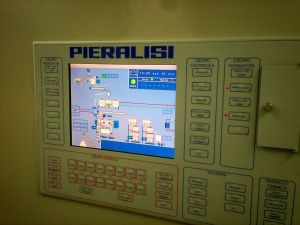
Made in Italy, the Pieralisi is computerized but the operator has manual control over the critical stages to optimze production quality
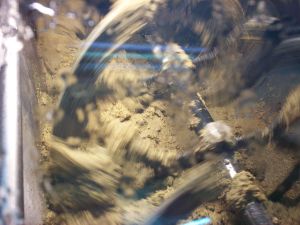
After bring washed and put through the grinding process, the result is a thick paste which is mixed and warmed to a maximum of 26C before being sent to a centifuge to separate out the oil and water from the paste
`
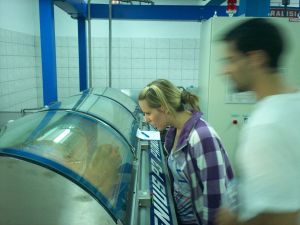
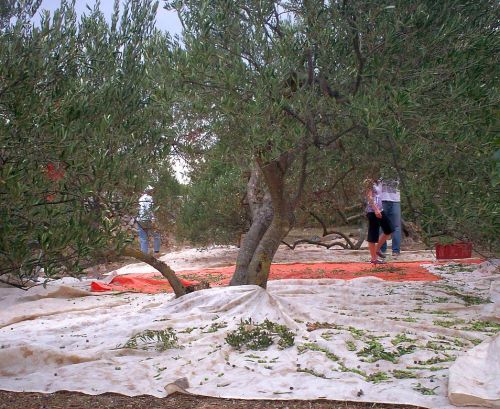
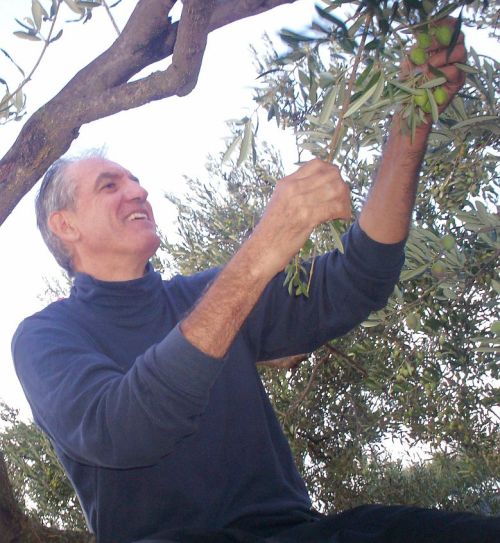
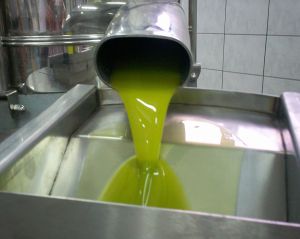
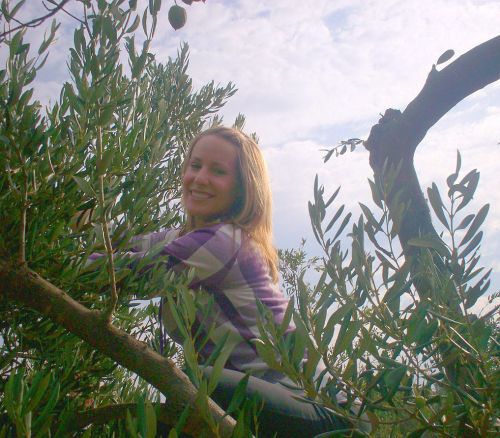
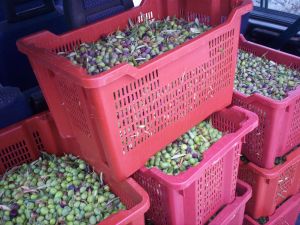
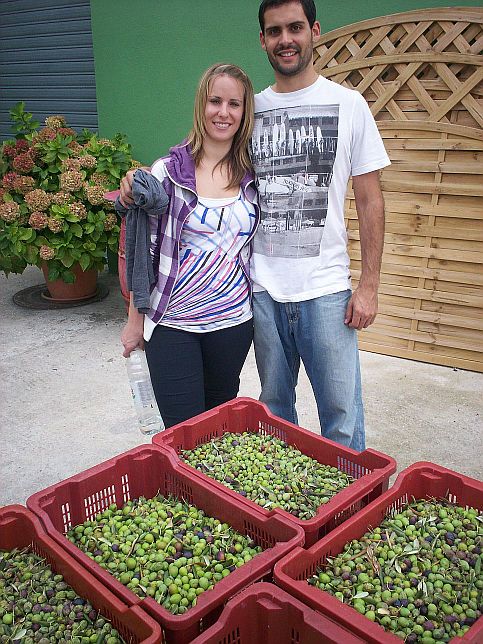
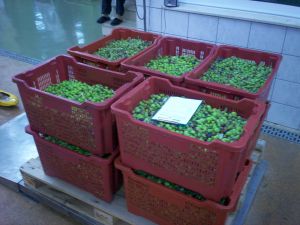
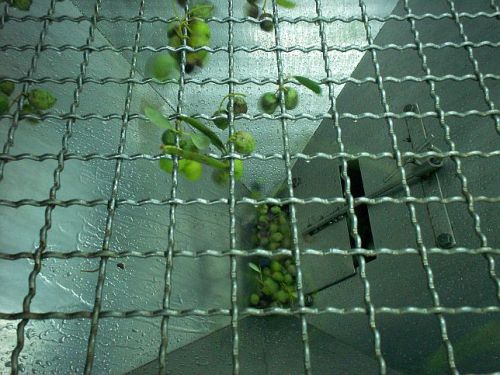
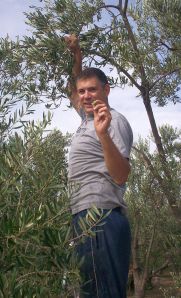
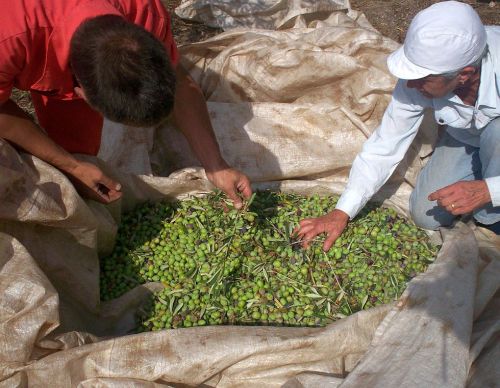
This is a beautiful write-up of the process. And the photos are great too. It is amazing how a fruit that is not edible when fresh, transforms into a delightful and flavorful spice and continues to change with time. I personally love the fresh, green and grassy flavor of young oil, but I can appreciate the warm, buttery taste of dark olives and oil that sat for several months.
By: una on January 6, 2010
at 2:59 pm
I have property on Šolta and usually I’m there in summer, but I have always wanted to go for the harvest. This year, illness in the family is keeping me in the US for now – so I’m thinking this might finally be the year I participate in the harvest. Apparently the 2010 harvest was huge – locals were emailing photos to me. This makes me more than a little wistful, though….
By: tinica on June 30, 2011
at 4:00 pm